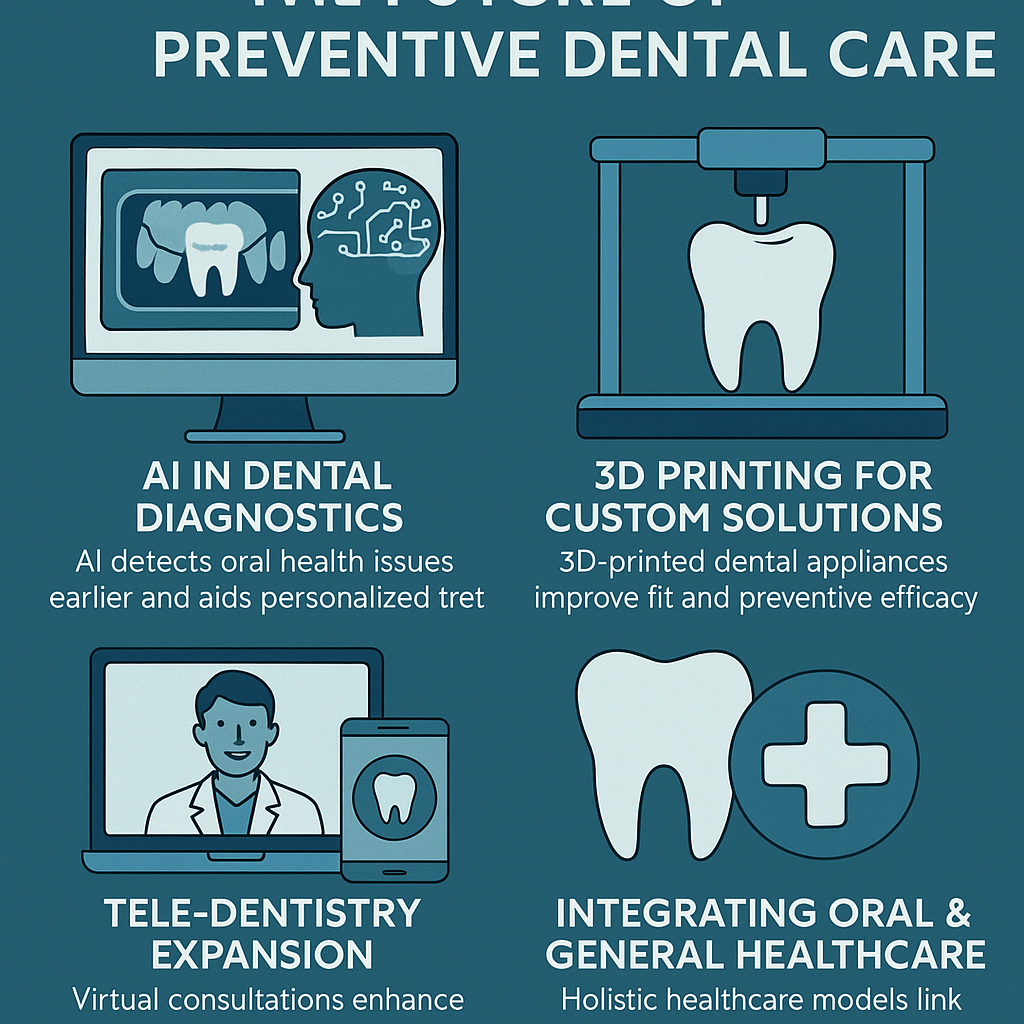The landscape of preventive dental care is rapidly evolving, thanks to a convergence of cutting-edge technologies and a renewed emphasis on the integral connection between oral and overall health. From AI-powered diagnostics to the integration of dental services in broader healthcare frameworks, these advancements are set to redefine oral health maintenance. As patients and practitioners alike embrace these innovations, visiting a trusted provider, such as the one showcased at https://montrosefamilydental.com/, ensures access to the most current and effective approaches in preventive care.
At the same time, public awareness about the impact of dental habits and regular screenings has increased, driving demand for new solutions that prioritize prevention over treatment. These trends signify not just improvements in technology but also a shift in mindset, both for practitioners and the communities they serve.
As dental care becomes more intertwined with overall health, efficient resource allocation, policy innovation, and patient empowerment are becoming central to achieving positive outcomes for all. The future of oral wellness is a collaborative journey where technology, access, and education intersect for the greater good.
Let’s examine the pivotal trends, innovations, and policies shaping the next era in preventive dental care, and what patients can expect as the field continues to advance.
Table of Contents
AI in Dental Diagnostics
Artificial Intelligence (AI) is emerging as a transformative force in dental diagnostics. Sophisticated algorithms now analyze digital images to identify early stages of cavities, gum disease, and other oral issues, often before visual symptoms surface. The result is earlier, more accurate detection and intervention, helping to prevent minor concerns from becoming major health problems. AI-driven diagnostic tools also empower dental professionals to create highly individualized care plans, which can significantly improve outcomes for patients worldwide.
For example, AI can review thousands of radiographs in seconds, identifying even the smallest areas of demineralization or inflammation with a level of precision that surpasses the naked eye. This not only increases diagnostic accuracy, according to resources such as the American Dental Association, but also facilitates a more proactive approach to oral health management, reducing the risk of costly and painful treatments down the line.
3D Printing for Custom Solutions
The dental sector has become one of the most enthusiastic adopters of 3D printing technology, particularly in the areas of custom prosthetics, retainers, and aligners. Unlike traditional lab manufacturing, which can be slow and occasionally imprecise, 3D printing produces ultra-personalized dental appliances in a fraction of the time. The benefits are clear: faster turnaround, reduced patient wait times, and a more comfortable, better-fitting solution for every individual’s unique dental anatomy.
This approach is particularly promising for restorative and cosmetic dentistry, where exact fit and smooth aesthetics can dramatically impact patient satisfaction. Personalized dental appliances produced via 3D printing also make preventive care more effective, since ill-fitting devices are more likely to cause discomfort or not be worn consistently, undermining preventive goals.

Tele-Dentistry Expansion
Tele-dentistry has surged in popularity, making dental advice and follow-up care far more accessible to diverse populations, especially in rural or underserved regions. Through secure video calls and mobile imaging, patients can present their symptoms and consult with a dentist without needing to visit the office physically. Early intervention through tele-dentistry can prevent problems from escalating, promote ongoing maintenance, and minimize delays in care. This model not only saves patients time and travel costs but also ensures that those with mobility challenges or busy schedules do not neglect their oral health. It is a prime example of how digital transformation in healthcare is lowering barriers and delivering long-term value to both individuals and the broader community.
Increased Focus on Preventive Care
Preventive care is once again on the rise, with utilization rates almost bouncing back to pre-pandemic levels. This upturn is fueled by heightened awareness of the role regular exams, cleanings, and early intervention play in long-term dental health. The shift toward prevention, not just treatment, underscores the recognition that proactive strategies can reduce the incidence of severe dental disease and lower overall healthcare costs.
Employers, insurers, and healthcare policymakers are increasingly incentivizing preventive check-ups, reflecting a shift toward value-based care across the entire healthcare ecosystem. With better patient outcomes and lower expenditures, preventive dental care is rapidly becoming the gold standard.
Policy Changes and Accessibility
Policy reforms at the state level are increasing access to dental benefits for adults through Medicaid expansion efforts. States like Tennessee have invested tens of millions in annual funding, leading to expanded eligibility for more than 650,000 adult enrollees. Despite these positive developments, dental access remains a challenge for many, as a limited pool of Medicaid-accepting dentists, administrative complexities, and reimbursement rates can deter provider participation. For a more equitable future, efforts must address provider recruitment and streamline administrative procedures to connect more patients with essential preventive care.
Patient Engagement and Education
Adults are increasingly motivated to take proactive steps in maintaining oral health, with recent reports revealing that 91% cite cost savings and avoiding large, unforeseen dental bills as major reasons for adhering to hygiene routines. Likewise, nearly three-quarters aim to prevent common dental issues, such as cavities and gum disease, a significant increase over previous years. This heightened awareness is also prompting dental practices to prioritize education, empowering patients to make informed decisions and fostering a collaborative relationship between patients and their providers.
Integration of Oral and General Healthcare
There is strong and growing evidence that oral health is intricately linked with systemic wellness. Poor dental hygiene is associated with conditions such as diabetes, cardiovascular disease, and even adverse pregnancy outcomes. Medical and dental professionals are thus moving toward a more integrated care model, recognizing that interventions at the dental level may yield improvements in overall health. This coordinated approach ensures that dental issues are not overlooked and are considered part of a patient’s broader medical profile, a crucial step for modern healthcare delivery.
Conclusion
The future of preventive dental care is being shaped by unprecedented innovation and a collective focus on patient-centered outcomes. Empowering patients with knowledge, leveraging digital technologies, and implementing policies that enhance access are all essential components of a more effective and equitable healthcare system. The next chapter in oral health will be defined by interdisciplinary collaboration, intelligent automation, and a shared commitment to prevention, setting the stage for healthier smiles and healthier lives.


